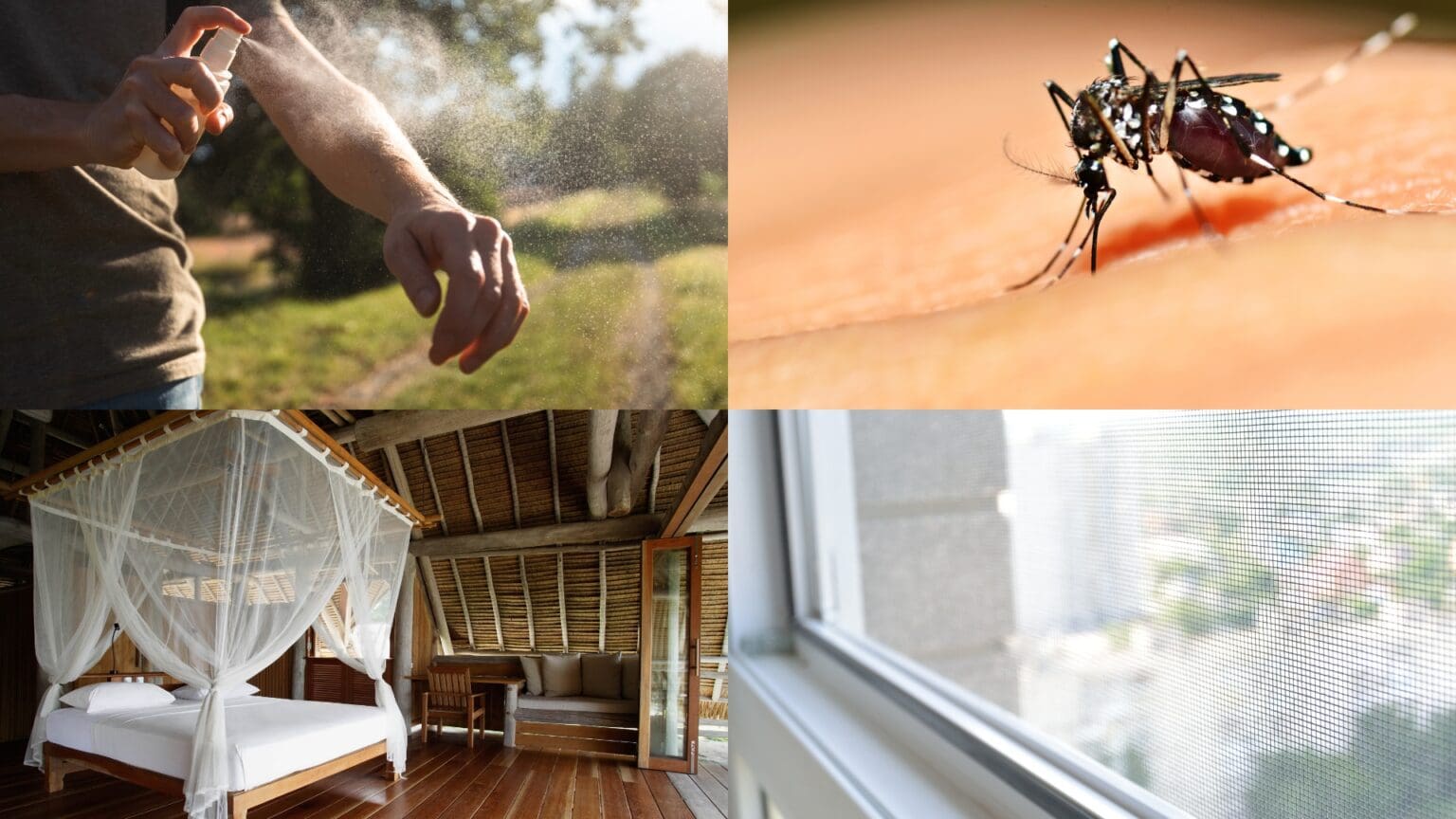Exploring new destinations should be about adventure, culture, and breathtaking landscapes—not dealing with painful, itchy, or even dangerous insect bites.
Mosquitoes, ticks, sand flies, and other biting insects can pose serious health risks, transmitting diseases like Malaria, Dengue, Lyme disease, Leishmaniasis, and West Nile virus.
In this guide, you’ll learn evidence-based, expert-approved strategies for preventing insect bites, protecting yourself from infections, and ensuring a safe and enjoyable journey.
Keep reading to stay bite-free!
In This Article
This post includes affiliate links. If you choose to purchase through these links, I may receive a commission, helping me continue creating valuable content for you. This comes at no additional cost to you.
Understanding the Risks: Why Insect Bite Prevention Matters
Biting insects aren’t just annoying —they can be disease carriers.
Mosquitoes spread chikungunya, dengue, Zika, malaria, yellow fever, and more.
Ticks transmit Lyme disease and tick-borne encephalitis.
Sand flies can cause leishmaniasis, and even bed bugs, though not disease carriers, can trigger severe itching and allergic reactions.
With climate change expanding insect habitats, even travelers in regions previously considered low-risk need to be proactive about protection.

Choose the Right Insect Repellent
Your first defense is a reliable insect repellent. The CDC and WHO recommend repellents containing:
- DEET (20-50%)—Highly effective; suitable for pregnant women and children over two months.
- Picaridin (Icaridin) (20%)—Just as effective as DEET but without plastic-damaging properties.
- Oil of Lemon Eucalyptus (PMD, 30-40%)—A natural option with strong protection but requires frequent reapplication.
- IR3535 or 2-UNDECANONE—Lesser-known but effective alternatives.
Get these on Amazon:
40% DEET repellent, 20% Picaridin repellent, 30% Oil of Lemon Eucalyptus repellent, 20% IR3535 repellent.
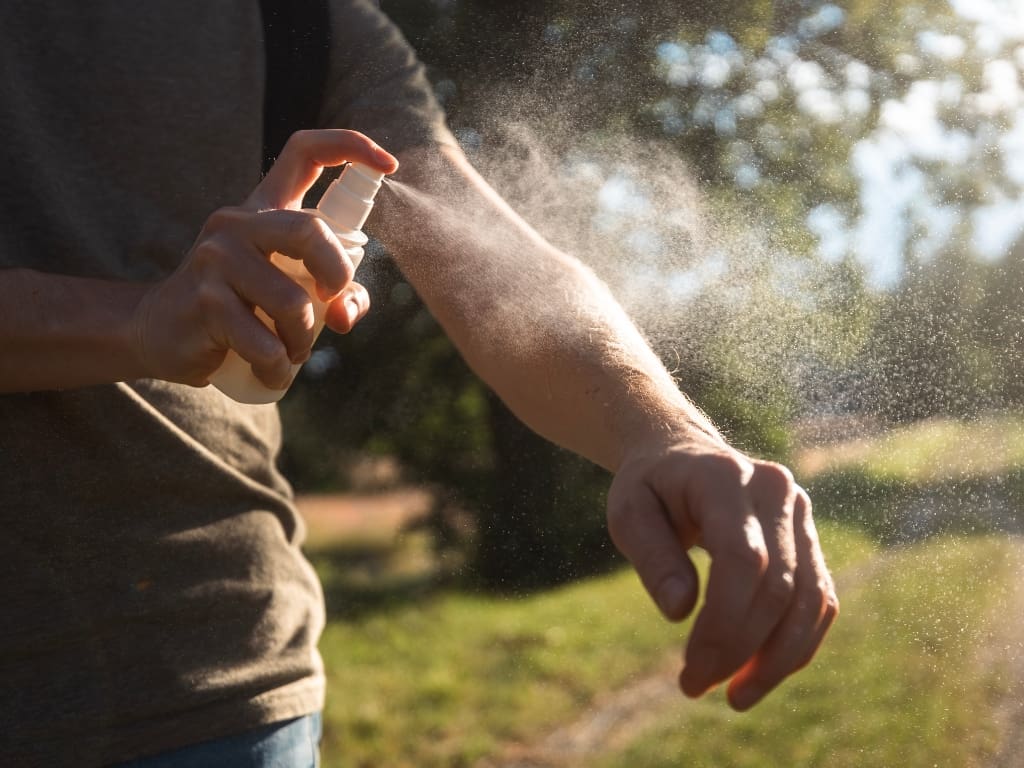
DEET (N, N-diethyl-m-toluamide)
DEET-containing repellents are the first choice in most situations. They have been used for more than 50 years, and many studies prove a low risk of adverse events, even in infants and pregnant or breastfeeding women.
Fewer than 50 cases of significant DEET toxicity were reported in the last 50 years (in most cases, it was improperly used).
Used by more than 200 million people annually, they have shown great efficacy and safety. It is mind-blowing that more than 20,000 other compounds were tested as replacements and couldn’t show superiority.
UK guidelines, especially for Malaria prevention, recommend 50% DEET and 20% Picaridin as the most effective with comparable effects. The efficacy of DEET is not much higher in concentrations over 50%.
Natural repellents:
Most natural repellents either work for a limited time, are unreliable or don’t work at all.
The only plant-based repellent recommended by UK guidelines is Eucalyptus citriodora oil, hydrated, cyclized (also known as Oil of Lemon Eucalyptus).
Although it is made from the leaves of lemon eucalyptus trees, processing still needs to be done. Sulfuric acid or specific temperature and pressure are used to refine the final product, which contains a high PMD (para-menthane-3,8-diol) concentration, which is the active ingredient.

Natural repellents often sold by locals to tourists may contain lemongrass, eucalyptus, cinnamon, or similar ingredients, which have some repellent activity. However, they won’t work to protect you, mostly because their effect will be lost a few minutes after application.
Knowing this, we can debunk the myth I hear often from travelers: „I’ll buy the repellent when I arrive at the destination. They will have stuff that works for their mosquitoes.“
Yes, some repellents may work better for ticks and others for mosquitoes, but there’s no local repellent that is better for various insects than DEET and Picaridin. For better, you’ll buy the same DEET repellent there; for worse, you’ll buy some herbal repellent that won’t be effective.
You can try EPA’s tool for choosing the right repellent for you.
Quick tips on how to use repellents:
- Apply repellents only to exposed skin or clothing, not under clothing.
- Avoid using on cuts, wounds, or irritated skin.
- For sprays, apply to hands before using on the face; avoid eyes, mouth, and excessive use around ears.
- Wash hands after application to prevent accidental ingestion.
- Adults should apply repellents to children, avoiding their hands.
- Use a thin layer; heavy application isn’t necessary. Reapply only if needed.
- Wash off repellent-treated skin with soap and water after use.
- Follow label instructions for repellent-treated clothing.
- Apply sunscreen before repellent. DEET can reduce SPF effectiveness, so use SPF 30-50 to compensate.
- Always follow reapplication instructions, especially in hot, humid climates where sweat can reduce effectiveness.
Dress for Protection: What You Wear Matters
Clothing is a physical barrier against bites. Follow these steps to reduce the risk of bites:
- Wear long-sleeved shirts, long pants, and socks.
- Choose light-colored clothing (dark colors attract mosquitoes and biting flies).
- Treat clothing with permethrin for additional protection.
- Avoid bright colors and floral patterns in regions with tsetse flies, as they are attracted to them.
- Tuck pants into socks and wear closed shoes instead of sandals in high-risk areas.
Pre-treated permethrin clothing remains effective after multiple washes. For optimal protection, apply treatments at least 24-48 hours before travel. DEET may also be used on cotton or wool clothing, but it may damage synthetic fibers and won’t last very long.
Where and When You’re Most at Risk
Different insects have specific active periods and habitats:
- Aedes mosquitoes (dengue, Zika, yellow fever) bite during the day, mostly at dawn and dusk. Dengue is more common in urban and semi-urban areas.
- Culex mosquitoes (West Nile virus, Japanese encephalitis) bite at night.
- Anopheles mosquitoes (malaria vectors) bite after sunset and late at night (3-6 a.m.).
- Ticks are most active from April to September in wooded, grassy areas in the northern hemisphere.
- Sand flies (leishmaniasis) thrive near beaches, forests, rivers, and coastal regions, most active at dawn and dusk.
- Bed bugs hide in mattresses and furniture and cause intense itching and allergic reactions.
Knowing these patterns allows you to take extra precautions when needed.
Sleeping Safe: Preventing Bites While You Rest
Your accommodation can be a breeding ground for insects. Use these protective measures:
- Bed nets treated with insecticide (permethrin or pyrethroid). The net must be free of tears, tucked in under the mattress, and taut, not drooping.
- Air conditioning and fans reduce mosquito activity.
- Check mattresses and bedding for bed bug signs (blood spots, eggs).
- Avoid sleeping near open windows without screens.
- Use plug-in insect repellents or room sprays before dusk.
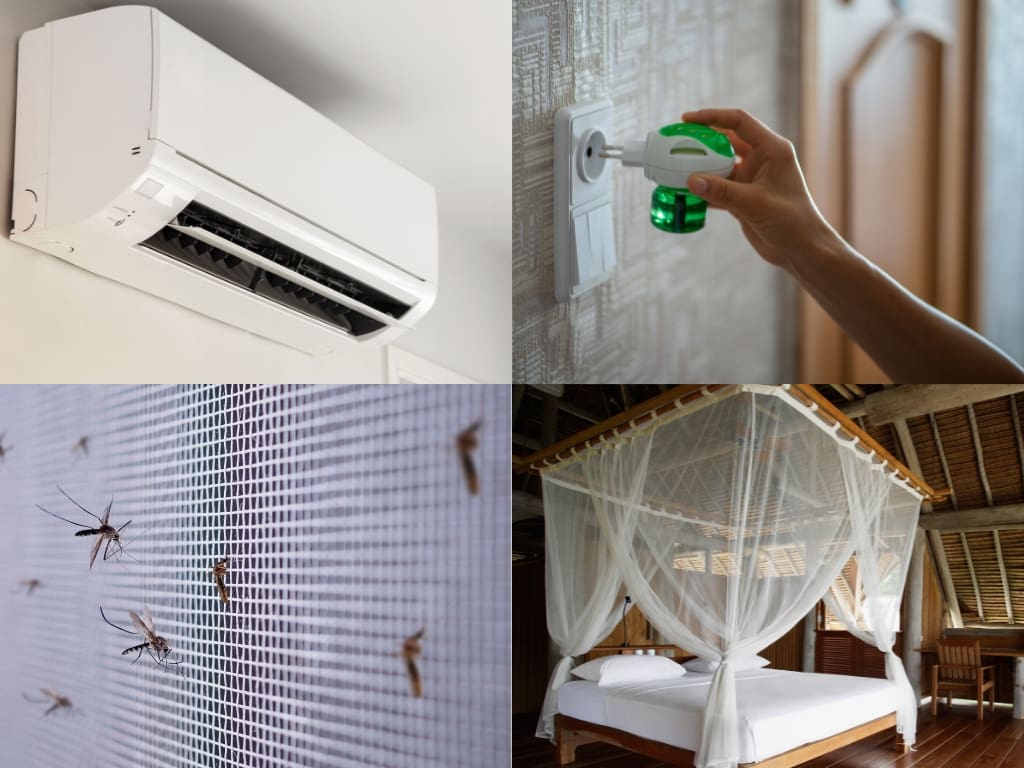
Tick Prevention: Extra Steps for Outdoor Enthusiasts
Ticks are stealthy and can transmit Lyme disease, Tick-borne encephalitis, and African Tick-Bite Fever. If hiking, camping, or spending time outdoors:
- Stick to center trails, avoiding high grass and brush.
- Check your clothing and gear for ticks before entering your lodging.
- Shower within two hours of returning indoors to reduce risk.
- Perform full-body tick checks, paying attention to:
- Underarms, behind ears, hairline, knees, groin, waistline.
- If you find a tick, remove it with fine-tipped tweezers, pulling straight out.
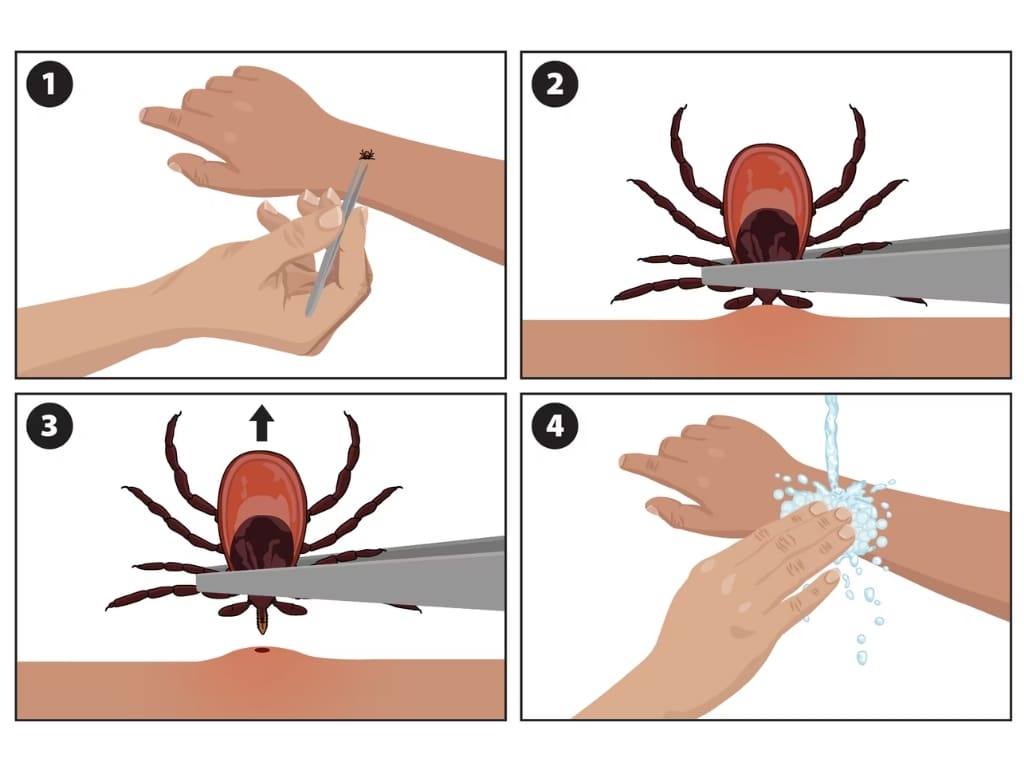
Environmental Awareness: Adjust Your Surroundings
Modify your immediate environment to reduce insect exposure:
- Eliminate standing water around lodging (mosquito breeding ground).
- Stay in screened or air-conditioned rooms.
- Avoid dense vegetation and still water bodies.
- Use mosquito coils outdoors but never inside due to fire risk.
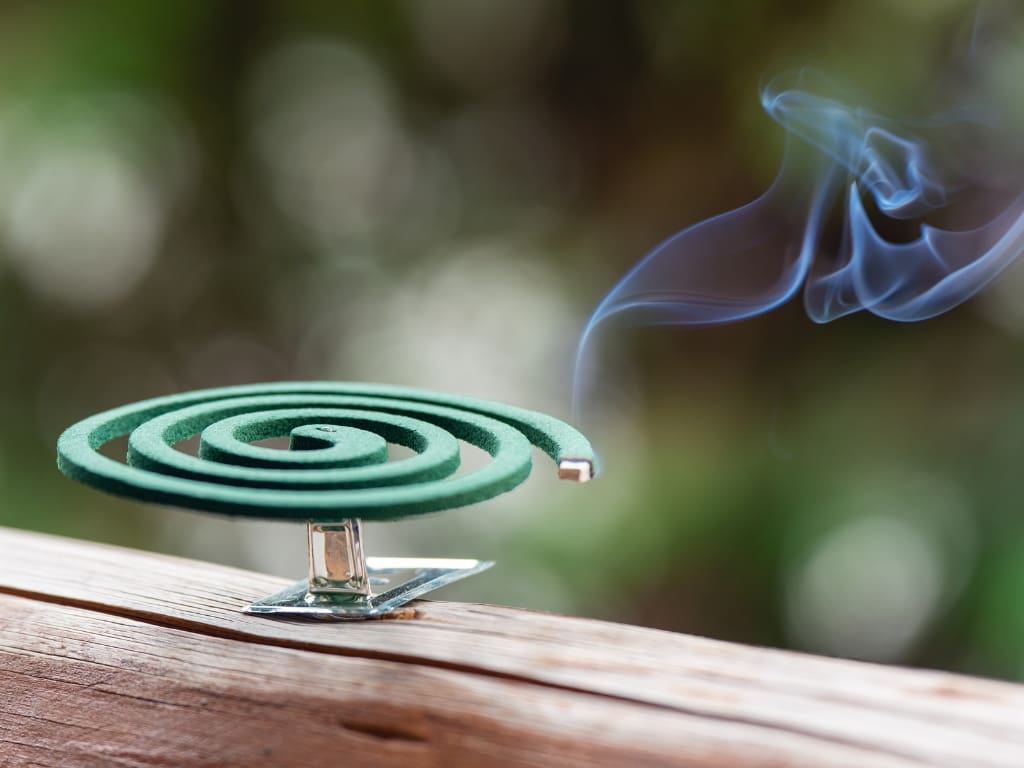
Treating Insect Bites
If bitten, follow these steps to reduce discomfort and prevent infection:
- Wash the area with soap and water.
- Apply antihistamines or hydrocortisone cream for itching and swelling.
- Avoid scratching, which can lead to infection.
- Monitor for allergic reactions and seek medical help if symptoms worsen.
- Ensure tetanus vaccination is up to date for larger bites.

Animal Bites Abroad: Essential Prevention and Treatment Tips
Summary & Final Tips
Fun facts to end with:
- Vitamin B, garlic, and over 100 other drugs and vitamins tested didn’t repel insects.
- Beer consumption increased human attractiveness to malaria mosquitoes in one study.
- The amount of quinine in tonic does not affect parasites causing malaria.
Prevention is key to avoiding the discomfort and health risks of insect bites. You can significantly reduce your risk by combining repellents, protective clothing, strategic planning, and environmental awareness.
Stay vigilant, follow these expert-backed tips, and enjoy a safe, bite-free adventure!
Looking for more travel health advice? Check out my other blog posts for expert tips on staying healthy while exploring the world!
Resources
Travel Medicine, 4th Edition – December 13, 2018, Authors: Jay S. Keystone, Phyllis E. Kozarsky, Bradley A. Connor, Hans D. Nothdurft, Marc Mendelson, Karin Leder, Language: English, Hardback ISBN: 9780323546966
Centers for Disease Control and Prevention (CDC). (2023). CDC Yellow Book 2024: Health Information for International Travel. Oxford University Press.
https://wwwnc.cdc.gov/travel/page/avoid-bug-bites
https://www.cdc.gov/bed-bugs/about/?CDC_AAref_Val=https://www.cdc.gov/parasites/bedbugs/
https://travelhealthpro.org.uk/factsheet/38/insect-and-tick-bite-avoidance
Xuan-Tien, L. E., Duc-Phuong, V. U., Nguyen, D. K., NGUYEN, T. N., & Thanh-Danh, T. O. N. G. (2024, April). A Study on Synthesis of para-menthane-3, 8-diol (PMD)-A Safe Mosquito Repellent Active Ingredient. In IOP Conference Series: Earth and Environmental Science (Vol. 1340, No. 1, p. 012029). IOP Publishing.
Lefèvre, T., Gouagna, L. C., Dabiré, K. R., Elguero, E., Fontenille, D., Renaud, F., … & Thomas, F. (2010). Beer consumption increases human attractiveness to malaria mosquitoes. PloS one, 5(3), e9546.
Disclaimer:
The information provided in this blog post is for general informational and educational purposes only and is not a substitute for professional medical advice. Always consult your physician or other qualified healthcare provider with any health problem. The use or reliance on any information provided in this blog post is solely at your own risk.


